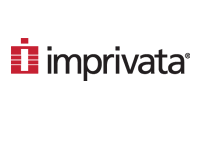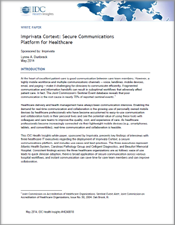Resource:
Imprivata Cortext: Secure Communications
This IDC whitepaper describes those efficiency challenges Imprivata Cortext solves for a highly mobile workforce across multiple communications channels.
IDC Health Insights
Sponsored by: Imprivata
Lynne A. Dunbrack May 2014
INTRODUCTION
At the heart of excellent patient care is good communication between care team members. However, a highly mobile workforce and multiple communications channels — voice, landlines, mobile devices, email, and paging — make it challenging for clinicians to communicate efficiently. Fragmented communication and information handoffs can result in suboptimal workflows that adversely affect patient care. In fact, The Joint Commission's Sentinel Event database reveals that poor communication is the root cause in nearly 70% of reported sentinel events.1
Healthcare delivery and health management have always been communication intensive. Enabling the demand for real-time communication and collaboration is the growing use of personally owned mobile devices by healthcare professionals who have become accustomed to easy-to-use communication and collaboration tools in their personal lives and see the potential value of using these tools with colleagues and care teams to improve the quality, cost, and experience of care. As healthcare professionals become increasingly connected via their lightweight mobile devices (e.g., smartphones, tablets, and convertibles), real-time communication and collaboration is feasible.
This IDC Health Insights white paper, sponsored by Imprivata, presents key findings of interviews with three healthcare IT executives regarding the deployment of Imprivata Cortext, a secure communications platform, and includes use cases and best practices. The three executives represent Atlantic Health System, Carolinas Pathology Group and Celligent Diagnostics, and Beaufort Memorial Hospital. Consistent findings across the three healthcare organizations are as follows: ease of use leads to quick clinician adoption, there is broad application of secure communication across various hospital workflows, and instant communication can save time for care team members and can improve collaboration.

